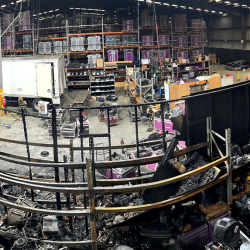Early on a Monday morning in February 2023, a fire threatened to engulf the ResX Melbourne warehouse. Emergency services did a fantastic job to keep our building standing. Unfortunately however, the damage was far reaching. Smoke and soot corroded much of what was not destroyed in the flames. ResX conducted extensive research into lithium-ion batteries after the incident. We spent weeks researching world best practices. We travelled around the country investigating existing practices in other industries that use the technology. Lithium-ion batteries can short circuit and catch fire in a process called ‘thermal runaway’. Thermal runaway involves one or more battery cells bursting, causing a release of gases and the production of a self-sustaining fire. Susceptibility to overcharging is a primary weakness in lithium-ion technology which can cause thermal runaway. Heat exposure, moisture, aging, cheap manufacturing, non-compliant chargers and physical disturbances such as crushing, dropping or piercing can also contribute to this type of failure. It is now ResX policy that batteries are never left to charge unattended. This includes leaving battery fixtures powered when running off mains power. If a battery fixture is plugged in, there must be someone in close vicinity. All charging devices will now be plugged in via programmable timers, in order to avoid any chance of overcharging. Monitoring devices will now provide early warning of battery failure prior to thermal runaway. Smoke detection systems will now be linked directly to the fire brigade. The implementation of an education program for all staff regarding the hazards associated with lithium-ion technology and the safety precautions required. Greater accessibility of fire suppression devices such as fire extinguishers, hoses, blankets and PPE needed for the removal of hazardous and potentially flammable devices.February Fire 2023
Research Conducted
Thermal Runaway
Actions Taken
Contact us on 03 9701 2411 (Melb) - 02 9737 8060 (Syd)
















































